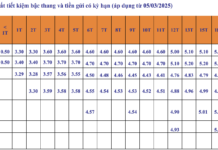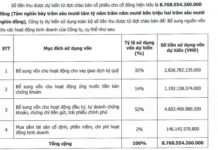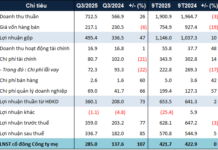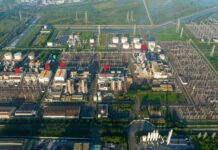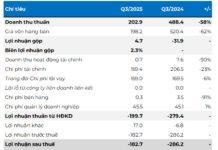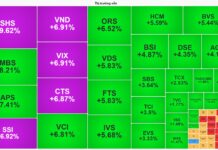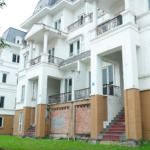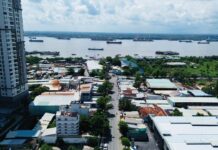Deadline Set for Hanoi Highway Expansion Completion
According to the Department of Transport Infrastructure Maintenance (Ho Chi Minh City Department of Construction), the Hanoi Highway (QL.1A) expansion project is led by Ho Chi Minh City Infrastructure Investment Joint Stock Company (CII). Due to land clearance issues, the company is adjusting the project, aiming to restart and complete it by 2027.
The Hanoi Highway expansion spans 15.7 km, divided into three sections from Saigon Bridge to Tan Van Junction. Section 1 runs from Saigon Bridge to Binh Thai Junction; Section 2 from Binh Thai Junction to Station 2 Junction; and Section 3 from Station 2 Junction to Tan Van Junction. The expansion will widen the road to 12-16 lanes, with a total investment of nearly VND 5 trillion.
Simultaneously, the Tan Van Junction project is accelerating construction, targeting technical completion by late 2025 and full completion by 2026. This is the most complex project on Ho Chi Minh City’s Ring Road 3, aiming to connect regions and stimulate new development in the area.
Tan Van Junction and its surroundings will be redeveloped into a multifunctional urban area, integrating parks, public recreational spaces, shopping centers, services, and modern offices. Notably, existing warehouses and cargo terminals will be transformed into green corridors and landscaped areas.

Tan Van Junction, adjacent to Hanoi Highway and Ring Road 3, is accelerating construction for technical completion by late 2025.
Additionally, key infrastructure projects at the city’s gateways, such as Binh Thai Junction, Ring Road 3, and the Ho Chi Minh City – Long Thanh Expressway expansion (An Phu – Ring Road 2 section), are being expedited to alleviate long-standing traffic congestion.
Experts predict that completing the Hanoi Highway expansion, Tan Van Junction, and other key projects between 2025-2028 will have a profound regional impact.
First, it will reduce traffic congestion, cutting travel time from central Ho Chi Minh City to Binh Duong and Dong Nai to 15-20 minutes.
Second, the 12-16 lane expansion will enhance safety by separating cars and motorcycles.
Third, it will boost trade, logistics, and services, particularly from Station 2 Junction to Tan Van, creating a dynamic economic zone attracting businesses and international experts.
Finally, improved traffic flow along Hanoi Highway, Tan Van Junction, and Ring Road 3 will transform the Eastern region and stimulate the real estate market along these routes.
Projects near these key infrastructure hubs are gaining significant attention. For instance, The Gio Riverside by An Gia, located at the intersection of Hanoi Highway and Ring Road 3, directly benefits from the region’s infrastructure development. Residents can reach Tran Bien Ward (Dong Nai) in 5 minutes, Bien Hoa – Vung Tau Expressway in 10 minutes, Long Thanh International Airport in 20 minutes, and Vung Tau in 70 minutes.
Notably, this project is scheduled for handover in late 2027, when all transportation infrastructure will be operational. This timing is ideal to meet the demand for real estate from experts and professionals working at the airport, high-tech zones, new administrative centers, and satellite industrial clusters, promising long-term price appreciation.
Fresia Riverside by Tan Van Real Estate JSC (TV Holdings), located near Tan Van Junction, is also attracting buyers with its competitive pricing and attractive sales policies.
Other real estate projects along Ring Road 3 and key Eastern infrastructure, such as Vinhomes Grand Park, The Classia, MT Eastmark City, The 9 Stellars, and Palm Marina, are benefiting from their strategic connectivity, enabling residents to easily access various city and regional locations.
Experts note that in a reshaping market, investors and buyers prioritize properties with high utility value, backed by tangible infrastructure and connectivity. Anticipation of infrastructure-driven price increases is evident in the real estate market.
Buyers Anticipate Infrastructure Development
According to a recent DXS-FERI report, 2025 is a pivotal year, marking a positive shift in market dynamics. Infrastructure development remains a key driver for the real estate market’s transition to a formal recovery in 2026.
In late August 2025, Ho Chi Minh City approved a resolution for Transit-Oriented Development (TOD) zones, defining a 1,000m radius around stations/depots. These changes are expected to reshape workforce movement toward new administrative centers and transform old administrative areas into public and utility spaces.
Currently, Ho Chi Minh City is reviewing TOD planning to attract investment as Metro Line 2 begins construction. Additionally, the city is accelerating two new metro lines: Metro Line 2 from Hiep Binh Phuoc Station to Thu Dau Mot (old) and an extension of Metro Line 1 to the new Binh Duong City (old), potentially creating new TOD zones around these projects.
Buyers are increasingly anticipating infrastructure developments. Real estate projects near key infrastructure hubs are seeing robust transactions. With new regulations and accelerating infrastructure, Ho Chi Minh City is poised to regain its role as Vietnam’s economic driver in the 2025–2030 cycle.
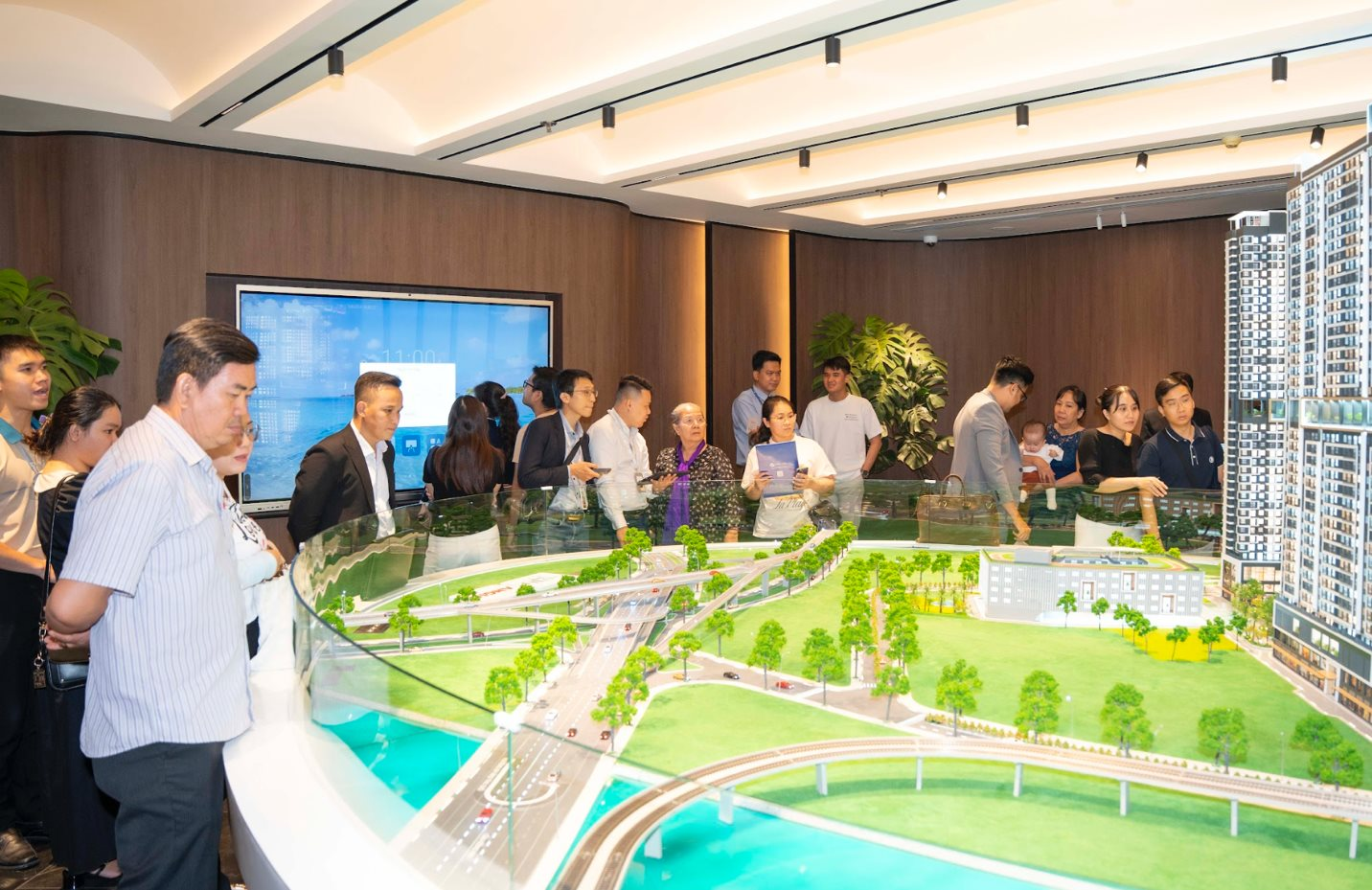
Buyers are increasingly anticipating infrastructure developments in the real estate market. Illustrative photo
According to Vo Huynh Tuan Kiet, Director of Residential Services at CBRE Vietnam, future housing supply will primarily come from Ho Chi Minh City’s satellite areas. Real estate value will be sustainable when it meets “future expectations”: prime locations, convenient connectivity, robust technical infrastructure, transparent legal frameworks, and regional economic potential.
He notes that primary apartment prices in Ho Chi Minh City (both old and new) have risen 15-30% annually and are expected to continue increasing due to infrastructure investments and urban sprawl. “As key infrastructure nears completion, the Eastern region and inter-regional gateways will become new real estate hotspots,” emphasizes the CBRE expert.
Five-Year Ban Proposed for Land Auction Defaulters by the Ministry of Justice
The Ministry of Justice has proposed stringent penalties for bidders who default on land auctions, including a ban from participating in future auctions for a period ranging from 6 months to 5 years. Additionally, defaulters will be required to fully compensate for any damages incurred as a result of their non-compliance.
Urban Darkness: Addressing the “No Streetlights” Crisis and Strategies to Stabilize Housing Prices
Amidst the growing concern of numerous new urban developments lying eerily vacant despite their modern infrastructure, Dr. Nguyen Van Dinh, Vice Chairman of the Vietnam Real Estate Association, has proposed six comprehensive solution groups aimed at restoring housing prices to a reasonable level.
Potential 5-Year Ban on Land Auctions for Defaulting Bidders; Proposal to Increase Deposit to 50%
The Ministry of Justice has proposed stringent penalties for individuals who default on land auction deposits, including a ban on participation in future auctions for a period ranging from 6 months to 5 years. Additionally, defaulters will be required to fully compensate for any damages incurred as a result of their actions.










